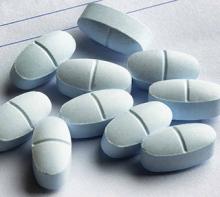Diagnostic errors top malpractice claims against emergency physicians
BY ALICIA GALLEGOS
FRONTLINE MEDICAL NEWS
More than half of medical malpractice lawsuits against emergency physicians involve allegations of diagnostic errors, according to a study by national medical liability insurer The Doctors Company.
The study analyzed 332 emergency medicine claims in the insurer’s database that were closed from 2007 to 2013. The findings show the importance of strong communication in the emergency department (ED), and how communication breakdowns can be catalysts for legal claims, Darrell Ranum, vice president for patient safety and risk management for The Doctors Company, said.
Mr. Ranum pointed out one claim in which a patient’s vital signs had changed during the course of a visit. The changes were not communicated to the emergency physician, and he inappropriately discharged the patient. In another case, a patient’s history of overdoses was not conveyed during a patient hand-off, which resulted in an overdose that was not treated in a timely manner.
“Sometimes, we find that patients don’t always understand instructions,” Mr. Ranum said. “If patients don’t understand the communication from their providers or if a patient receives inadequate information, such as in situations where you have a language barrier, you can have problems there as well.”
Another key lesson from the study is the importance of a thorough differential diagnosis, Dr David B. Troxel, medical director for The Doctors Company said in an interview.
Of the 332 claims, 57% were diagnosis related; they included allegations of failure to establish a differential diagnosis, failure to order diagnostic tests, failure to address abnormal findings, and failure to consider available clinical information.
View on the News Workflow bottlenecks contribute Dr Roneet Lev is director of ED operations for Scripps Mercy Hospital in San Diego. She made her remarks in an interview. |
“Our hope is that as physicians review the findings of this study, they will scrutinize their own systems and processes and determine whether the weaknesses identified in the study exist in their organization,” Dr Troxel said.
Among the other claims, 13% related to improper management or treatment, 5% claimed improper performance of treatment, and 3% alleged failure to order medication.
Claims could have more than one contributing factor. Problems with patient assessments, such as failure to address abnormal findings, contributed to 52% of claims. Patient factors, such as physical characteristics and noncompliance, were the second-most-frequent contributor at 21%. Other factors were lack of communication among physicians (17%), poor communication between doctors and patients (14%), insufficient or lack of documentation (13%), and workflow/workload issues (12%).
On Twitter @legal_med
ED-initiated buprenorphine ups treatment rates for opioid addiction
BY BIANCA NOGRADY
FROM JAMA
Vitals Key clinical point: Emergency department–initiated buprenorphine treatment increases the likelihood that opioid-dependent patients will seek addiction treatment. Major finding: Significantly more patients in the buprenorphine group sought addiction treatment in the 30 days after randomization, compared to the referral or intervention arms. Data source: Randomized controlled trial of 104 opioid-dependent patients. Disclosures: The National Institute on Drug Abuse funded the study. Reckitt-Benckiser Pharmaceuticals provided the drug. One author reported honoraria from private industry. |
Initiating buprenorphine treatment during an emergency department visit can significantly increase the likelihood that opioid-dependent patients will seek addiction treatment, according to results of a randomized clinical trial published in April 28 in JAMA.
Researchers randomized 104 opioid-dependent patients who had presented to the ED to screening and treatment referral, screening and a brief intervention with referral to a community-based treatment service, or screening with a brief intervention and ED-initiated treatment with buprenorphine/naloxone and referral to primary care.
Significantly more patients in the buprenorphine group sought addiction treatment in the 30 days after randomization compared to the referral or intervention arms (78% vs. 37% vs. 45%, P < .001), and they showed significant reductions in the number of days of illicit opioid use per week.
“Expanded use of ED-initiated buprenorphine with community follow-up should help increase access to treatment options for this chronic and relapsing medical condition that has substantial morbidity and mortality and that affects health care use and costs,” wrote Dr Gail D’Onofrio of Yale School of Medicine, New Haven, Ct., and coauthors (JAMA 2015; 313:1636-1644 [doi:10.1001/jama.2015.3474]).


